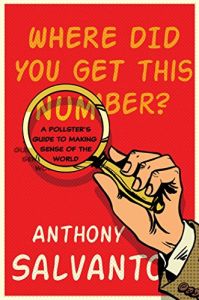Join getAbstract to access the summary!

Join getAbstract to access the summary!
Anthony Salvanto
Where Did You Get This Number?
A Pollster's Guide to Making Sense of the World
Simon & Schuster, 2018
What's inside?
Discover the story behind the numbers you see in polls.
Recommendation
How do polls predict political races? Anthony Salvanto, the political scientist who announces the projected winners on election nights at CBS News offers an insider’s take what the numbers reveal about Americans’ views on politicians and hot-button issues. Salvanto discusses the controversial 2016 US presidential election, voter turnout, increasing partisanship and economic disparity, and Americans’ thoughts on health care and immigration. Though a book focused on statistics might sound dull, Salvanto leverages fun metaphors to illustrate the way polling works and how it applies to politics.
Summary
About the Author
Anthony Salvanto serves as Director of Elections and Surveys at CBS News. He is in charge of national and state polling and controls the Decision Desk, which projects outcomes on Election Nights.

















Comment on this summary